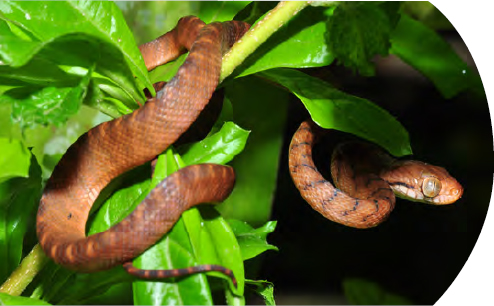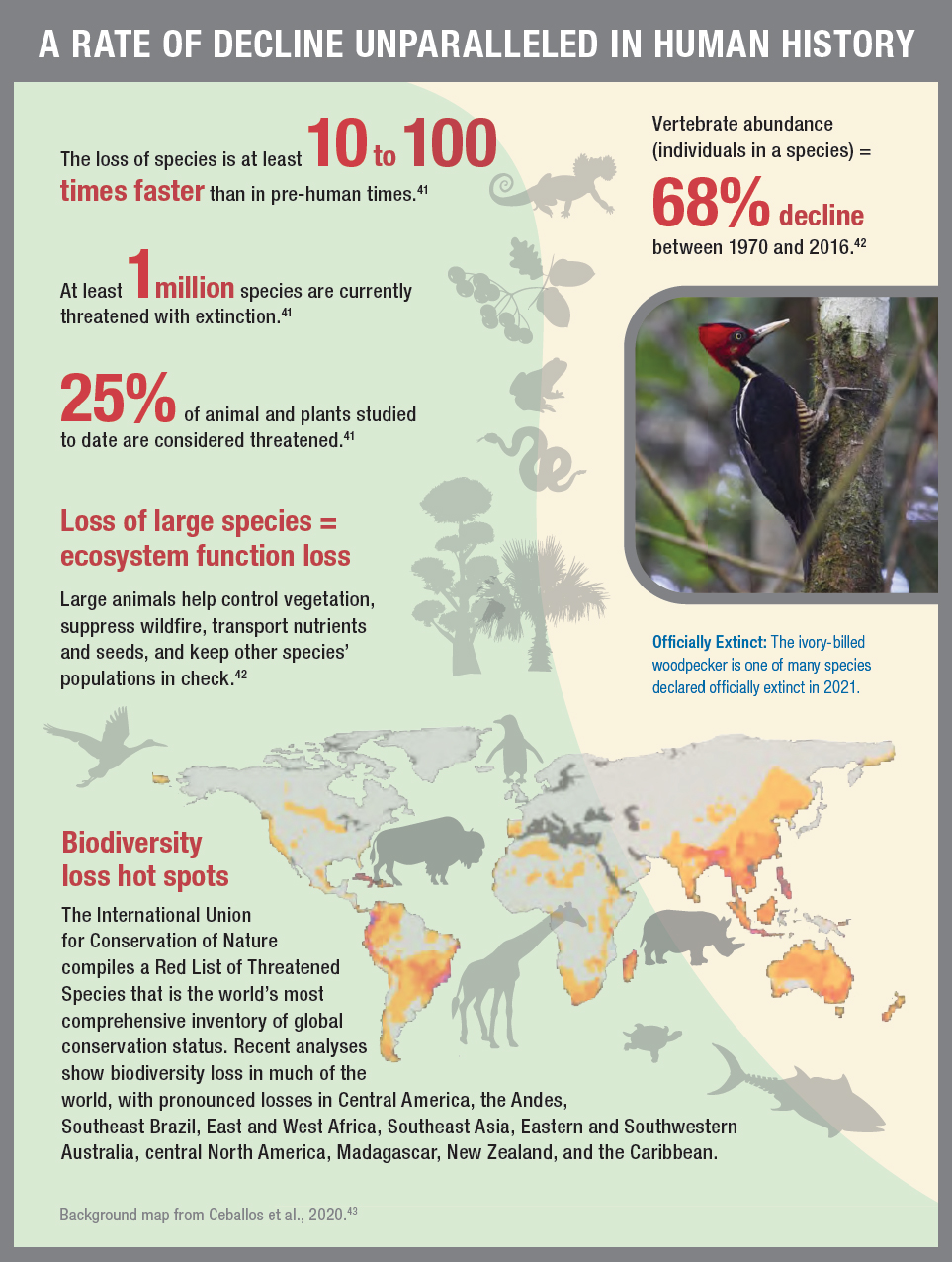 3 WHY IS BIODIVERSITY IN CRISIS?
3 WHY IS BIODIVERSITY IN CRISIS?
It is normal in nature for some species to become extinct, for new species to evolve, and for populations to grow and shrink over time. However, the current rate of global species extinction is tens to hundreds of times higher than the average over the past 10 million years. At least 680 vertebrate species have been driven to extinction since the 16th century and more than 40% of amphibian species, almost 33% of reef-forming corals, and more than one-third of all marine mammals are threatened.37 Even for species that are not threatened with extinction, the abundance, or number of individuals in a species, has plummeted in many places. Over the past half-century, monitored populations of mammals, birds, fish, reptiles, and amphibians fell by nearly 70%, on average.38 These local population declines can cause drastic ecosystem impacts even if the species on the whole does not go extinct.
Earth appears to be on the brink of a massive loss of biodiversity, with some 1 million species today under some threat,39 along with well-documented declines in genetic diversity, habitats, and ecosystems—unraveling the fabric that is biodiversity. This will be the first such loss that is brought about by human hands.40
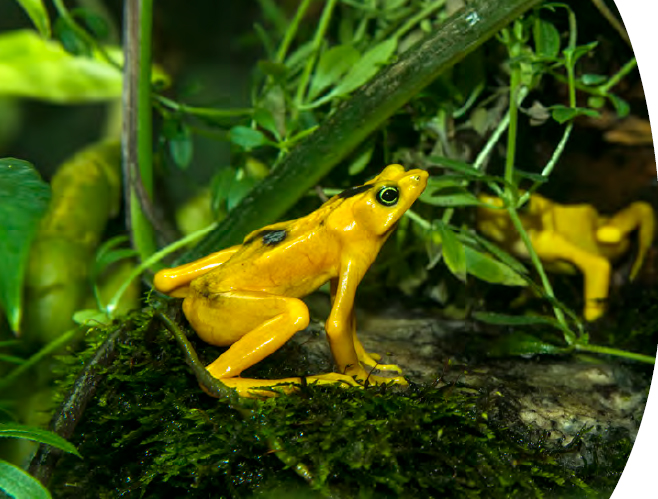
A Matter of Supply and Demand
The human population has grown drastically to 7.9 billion over the past few centuries, fueling a sharp uptick in our demand for food, fuel, and space. Economic growth and consumption has been even more pronounced, bringing a higher quality of life to billions of people but increasing the average footprint each person leaves on our planet. Humanity’s expansion has come at a cost to the ecosystems we exploit. The population is projected to rise to nearly 10 billion in the next 30 years (by 2050), which will place even greater strain on ecosystems.
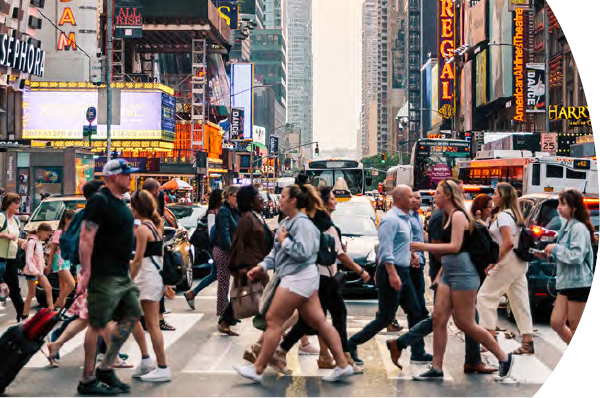
In investment terms, nature is the world’s “most precious asset,” yet humanity has, collectively, mismanaged its global portfolio to devastating consequences.44 Human demands far exceed nature’s capacity to supply the goods and services on which we all rely. Vast amounts of energy, water, and natural resources are wasted along the supply chain, and as much as one-third of all food produced is wasted.45 There are gross inequities in consumption and access to resources, with the average person in high-income regions like the United States, Western Europe, and Japan consuming many times the amount of resources used by people in the more numerous and more populous low-income countries. Achieving equitable access to resources for all people without worsening overexploitation and ecosystem degradation is a challenge of monumental proportions.
Changes in the Use of the Land and the Sea
Humans have been a major shaper of Earth’s features, altering much of the planet’s ice-free land surface.46 The clearing of land for farming and raising livestock has been one of humanity’s biggest impacts, taking up a full 50% of habitable land today.47 At the local scale, natural environments have been altered or disturbed by the building of cities, roads, and other infrastructure, and by extractive processes such as fishing, logging, mining, and oil and gas activities. The resulting habitat loss and fragmentation is among the greatest threats to species and ecosystems. For example, the loss of 35% of natural wetlands between 1970 and 2015 from land use change and other factors such as pollution48 not only threatens hundreds of thousands of species but also puts coastlines at greater risk of storms, erosion, and pollution.
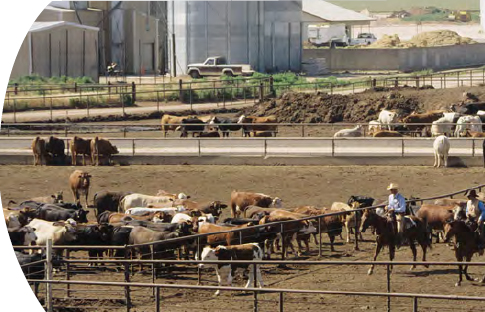
Unchecked Exploitation
Once considered inexhaustible, the world’s natural resources are now dwindling.49 With our present model of extracting profits from nature, we have decimated natural environments and their unique biodiversity for products like wood, food, and fur. For example, since humans started cutting down forests, 46% of trees have been felled globally, often without reforestation.50 These types of changes have far-reaching effects on species and the health of entire ecosystems and the ways ecosystems benefit humans. Converting vast swaths of the world’s forests and prairies to agricultural fields, for example, has compromised the land’s ability to absorb carbon dioxide, prevent erosion, maintain pollinator populations, and purify air and water. Draining Indonesia’s vast peat swamp forests to create palm oil plantations exposed carbon-rich peat soils that are highly flammable—fueling large, nearly inextinguishable fires that harm the species living there, generate heat-trapping carbon emissions, and pollute the air across Southeast Asia.51
Government incentives often favor expanding economic activity with little consideration of the harm it may cause to people or biodiversity. In fact, government subsidies for activities that exploit nature for energy, raw materials, agriculture, water, and fisheries carry an estimated price tag of $6 trillion each year.52 The economic activity supported by these incentives is often conducted for the benefit of businesses and consumers far away while the consequences of the associated ecosystem exploitation are felt by many rural and forest-dwelling households that rely on productive local ecosystems (e.g., small-scale farms and fisheries) for much of their livelihoods. Beyond legal activities, corruption—notably bribery of government officials—further exacerbates biodiversity losses. The cost of environmental crime, including the illegal wildlife trade, illegal fishing, and illegal mining, is estimated to be between $91 billion and $258 billion annually and has grown by two to three times the growth rate of the global gross domestic product.53

Changing the Climate
Humanity’s ever-growing demand for energy supplied by fossil fuels is driving the climate crisis, the impacts of which are projected to represent the biggest single threat to biodiversity in the coming years.54 As warmer weather drives some species into higher altitudes, populations are becoming restricted to shrinking livable areas. Droughts have become more extensive in recent decades.55 Hurricanes have become more intense. As the Arctic thaws, microbial pathogens are emerging and long-buried carbon is escaping, further amplifying global warming.56 Warming ocean waters threaten many species, especially those that depend on ice for hunting, and shellfish and corals struggle to thrive as oceans become warmer and more acidic. Mass coral bleachings and die-offs are becoming more common. Catastrophic wildfires are now an annual threat in parts of the United States and many other places; the 2020 Australian bushfires—which burned 186,000 square kilometers, an area the size of some entire countries—are estimated to have killed 3 billion animals.57

Polluting the Planet
Humans are spreading vast quantities of pollutants around the world, moving natural products such as metals to new places and creating synthetic products that have never before existed. Globally, humans generated more than 6 billion metric tons of plastic waste between 1950 and 201558—an amount roughly equivalent to just over half of the total biomass in the world’s oceans.59 The vast majority of this waste will linger in landfills, the oceans, and other natural environments for the foreseeable future—harming seabirds, turtles, and marine mammals. We already know that micro- and nano-plastics are everywhere, but are just beginning to understand their potential effects on organisms, including us. At the same time, more than 8,700 synthetic chemicals are used in global commerce,60 from weed killers to cosmetics, with numerous effects on the health of Earth’s creatures.
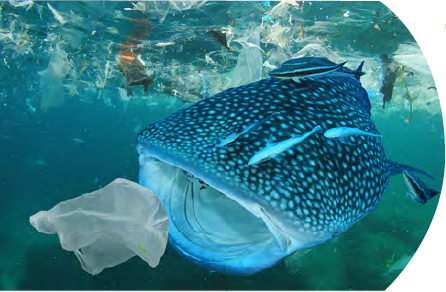
Synthetic fertilizers applied in the U.S. Midwest drain into the Mississippi River and create a 5,200 square kilometer (or 2,000 square mile) oxygen-starved dead zone in the Gulf of Mexico each summer that can kill fish and other marine life.61 Manufactured chemicals such as polyfluoroalkyl substances, or PFAS, which are ubiquitous in consumer products, are now found around the globe, even in the most remote ecosystems. Scientists detected these chemicals in the snow falling on Antarctica and the seals living along its coast.62,63
Enabling Invaders
Globalized transport and trade have enabled many species to spread to areas where they were not native, often destabilizing the cohesion of the existing ecosystems when they get a foothold. The brown tree snake, accidentally introduced to Guam after World War II, has eliminated 10 of 12 native bird species found there.64 Without birds, efforts to regenerate Guam’s forests are failing. Roughly 142 bird, mammal, and reptile species around the world have gone extinct due to invasive predators; an additional 596 species are considered Vulnerable, Endangered, or Critically Endangered.65 The damage from invasive species is estimated to triple every decade. Mosquitoes, rats, and termites are estimated to have caused a total of at least $1.3 trillion in damage to food crops, property, and how we can use some ecosystems because they were carried to new regions aboard ships.66,67 Even a single introduced species can disrupt the fabric of an ecosystem, causing an overwhelming toll. A 2019 survey found that the two amphibian chytrid fungi, which originated in Asia and spread around the world through trade, caused the decline of 501 amphibian species globally between 1965 and 2015.68 Of these, 90 species have gone extinct. Introduced species may sometimes increase the number of species in a particular area, yet homogenize the biodiversity we see around the world, akin to the effect when a global chain restaurant pops up and the local flavors and characters of local restaurants and shops are compromised.
